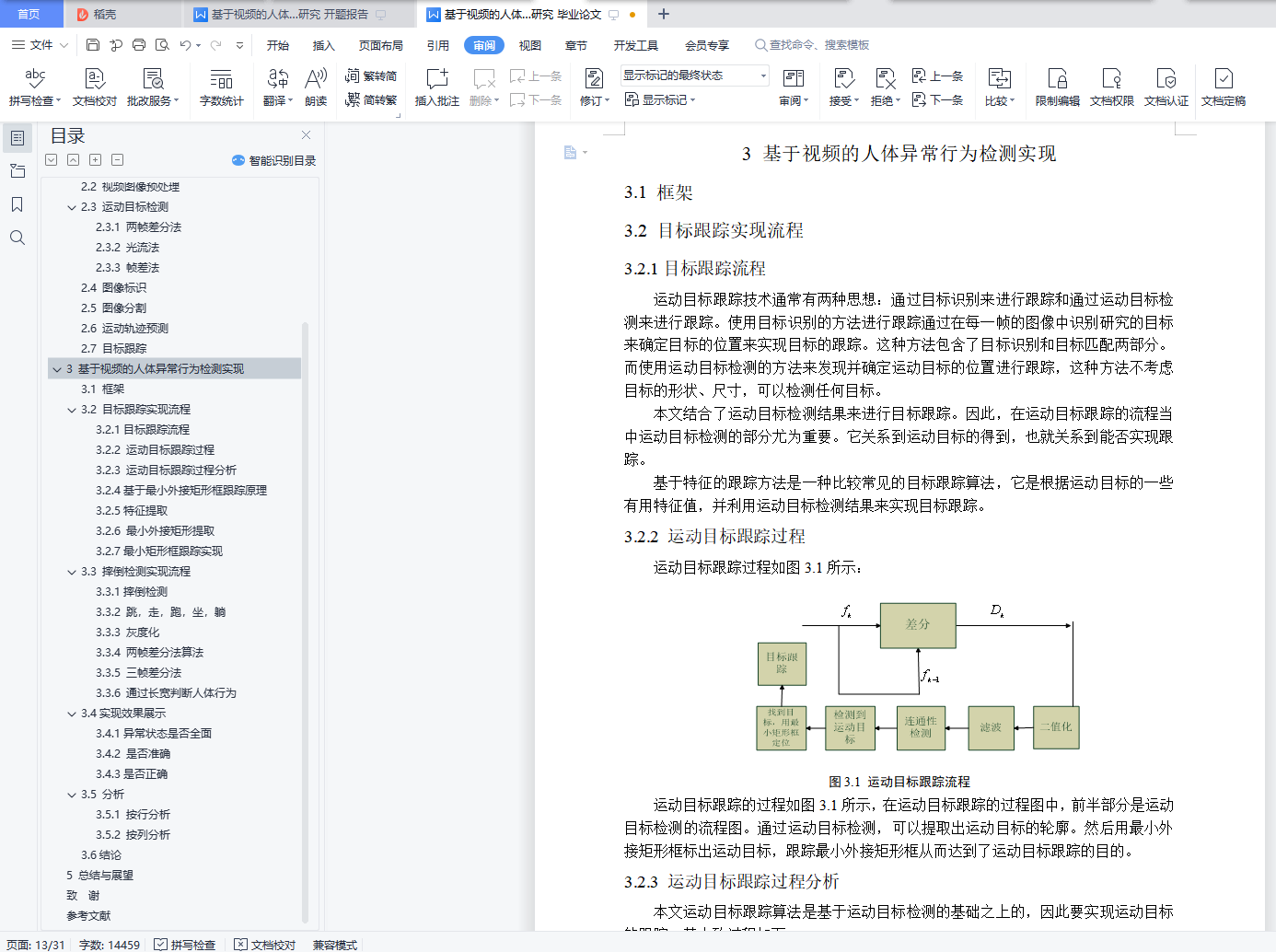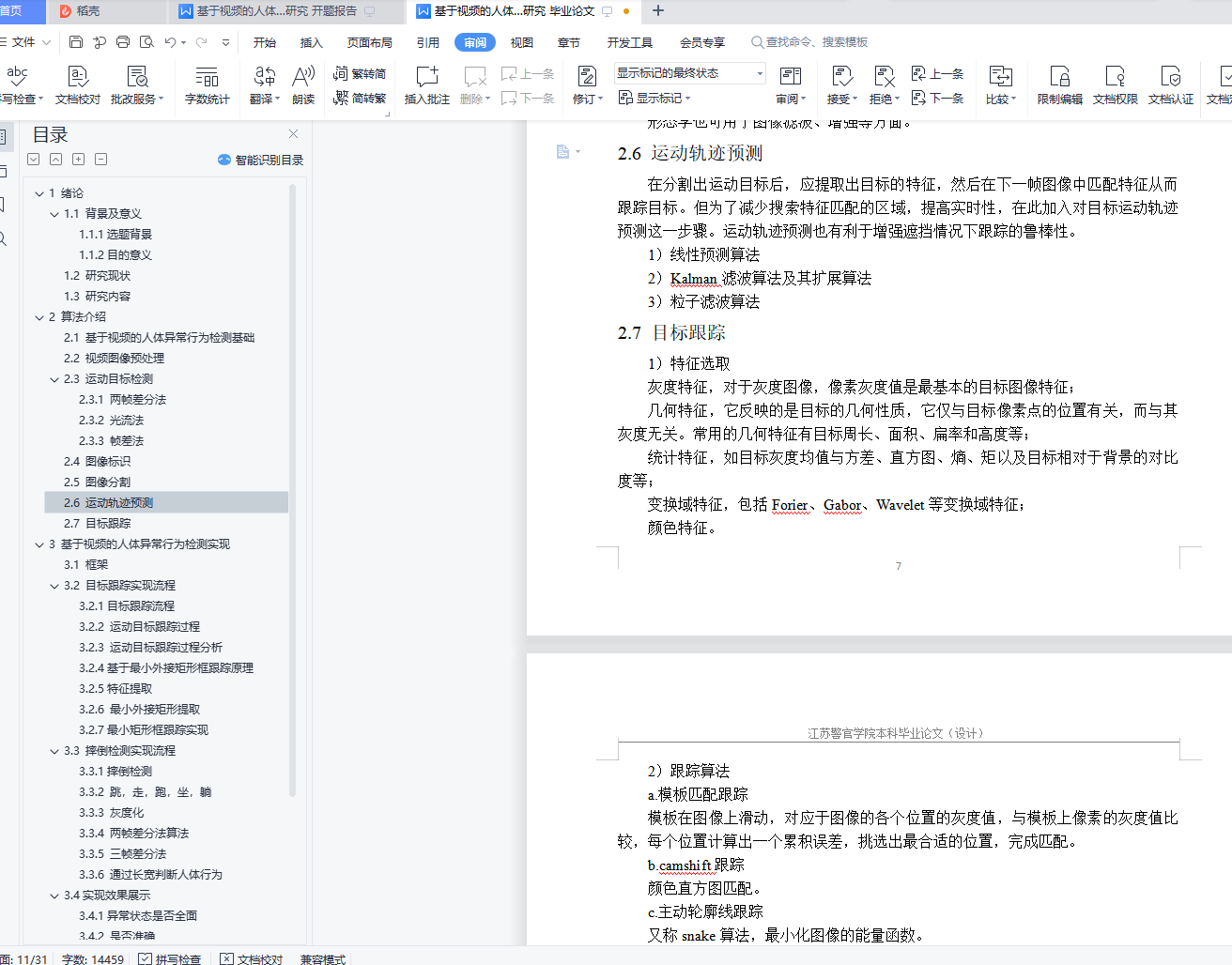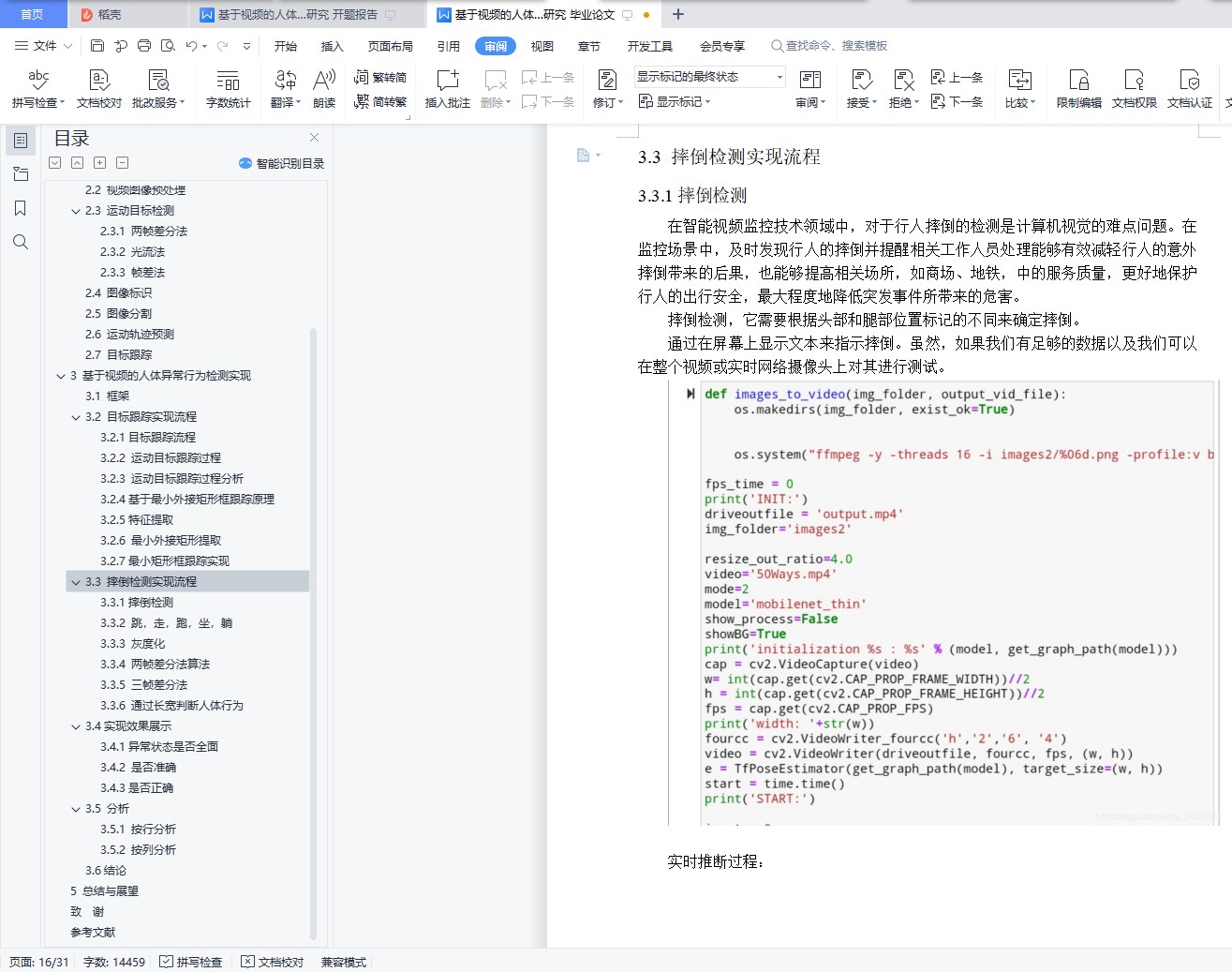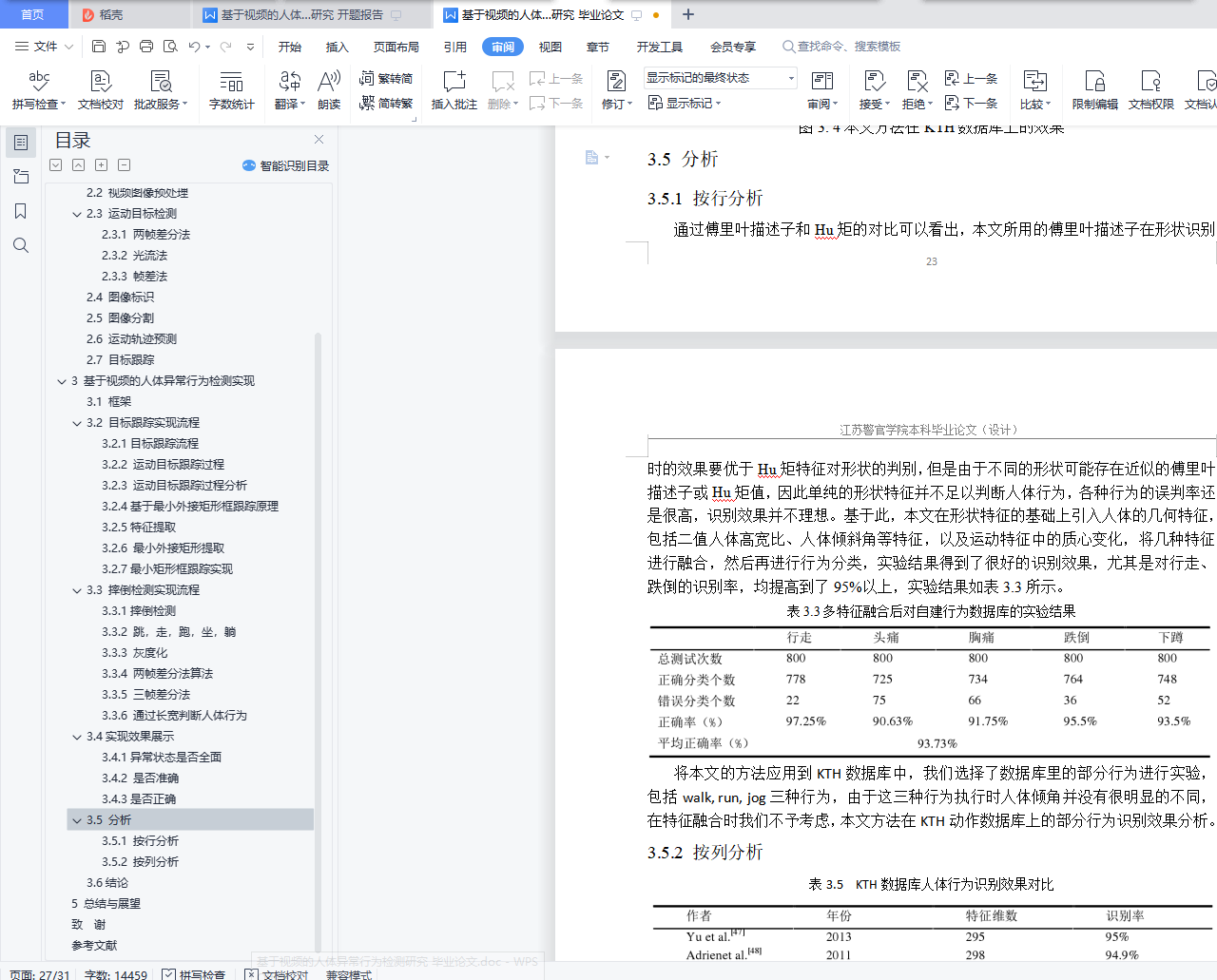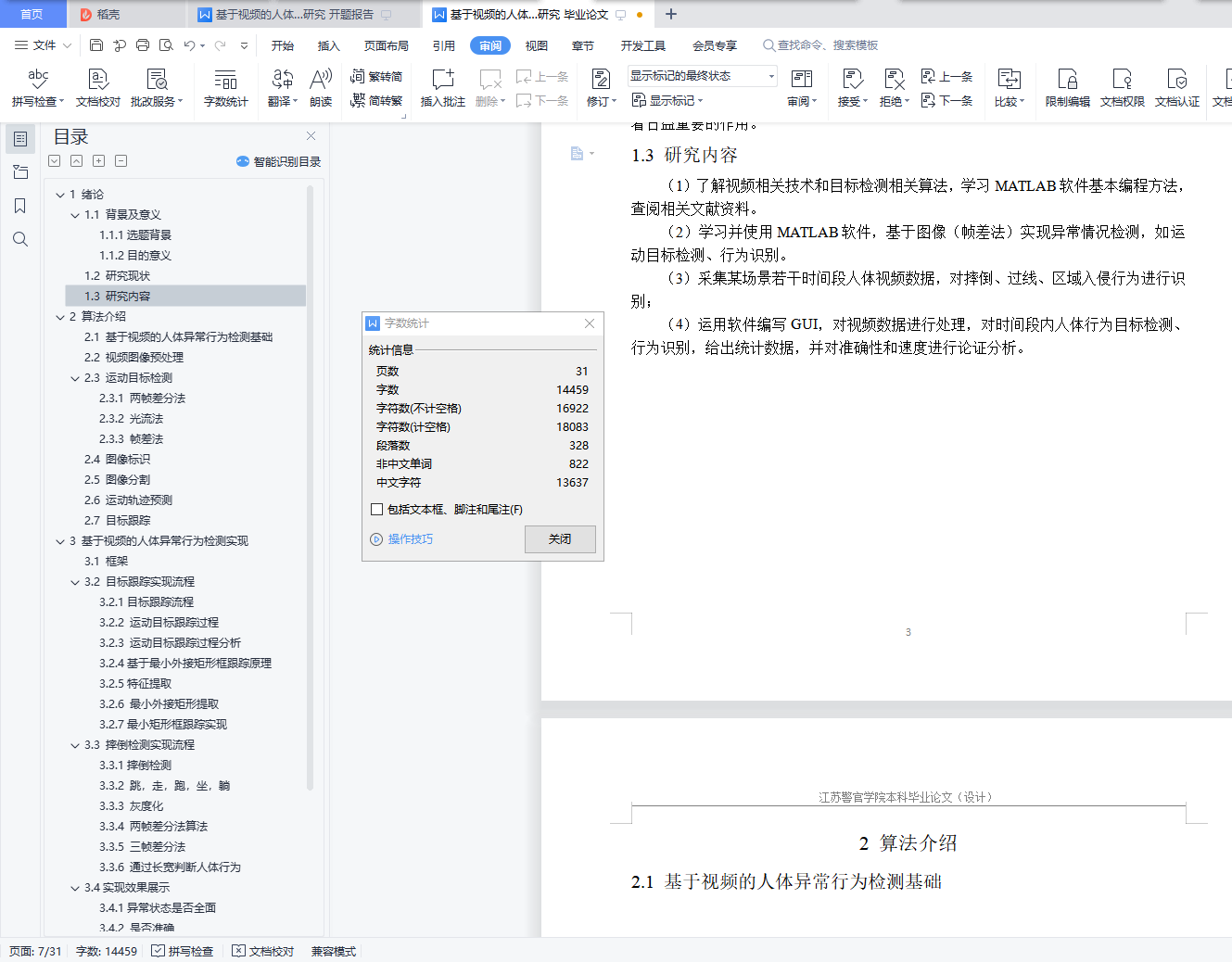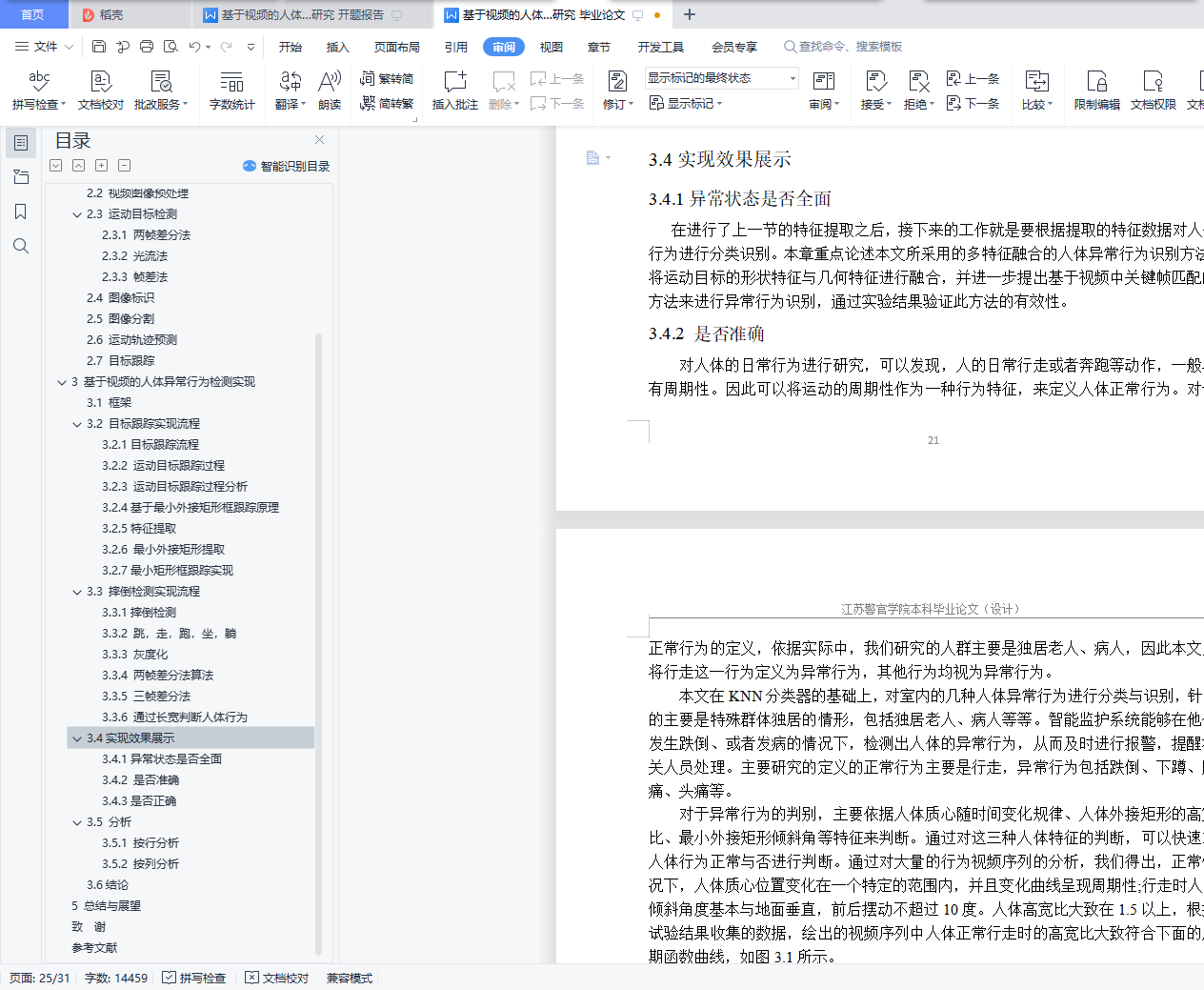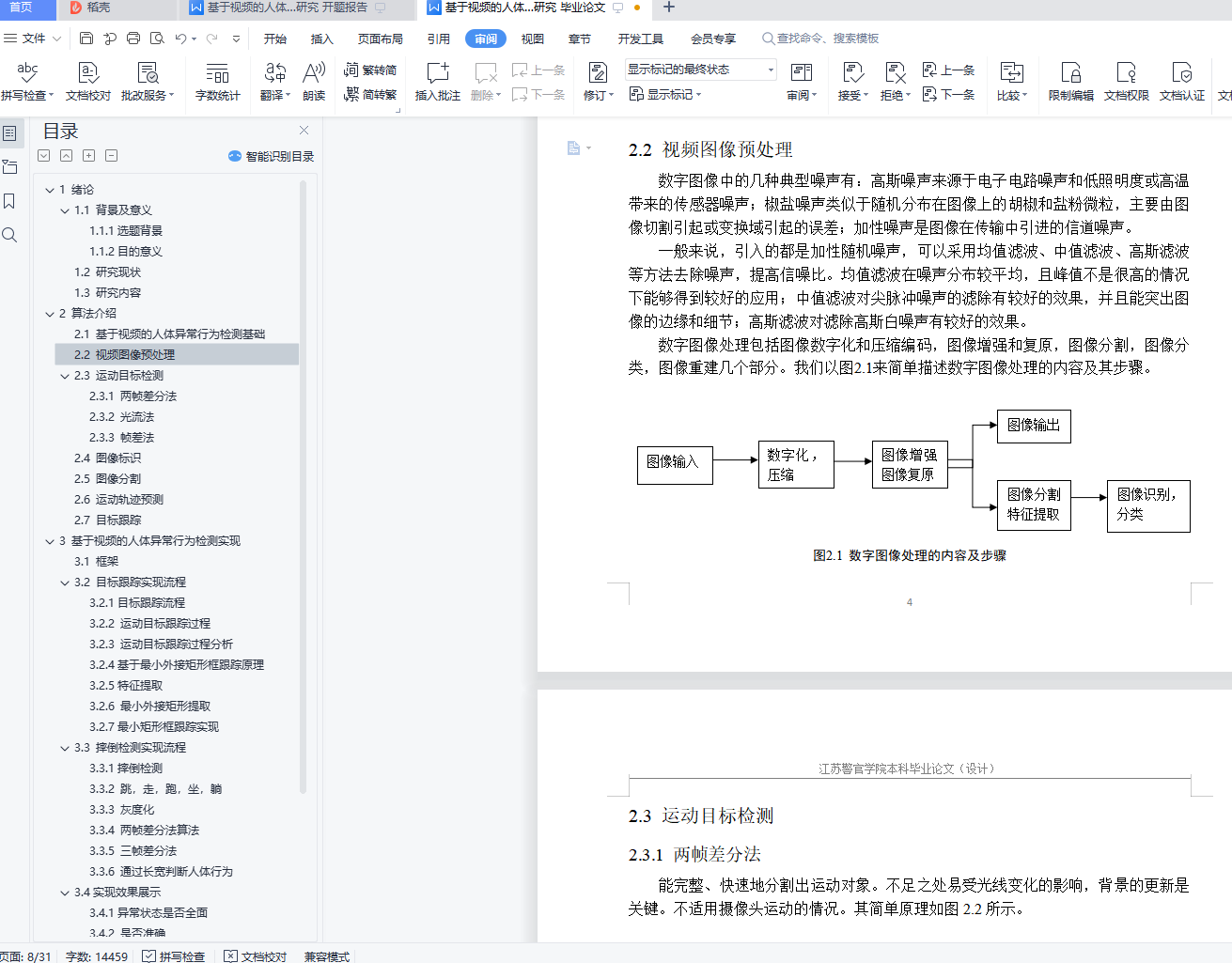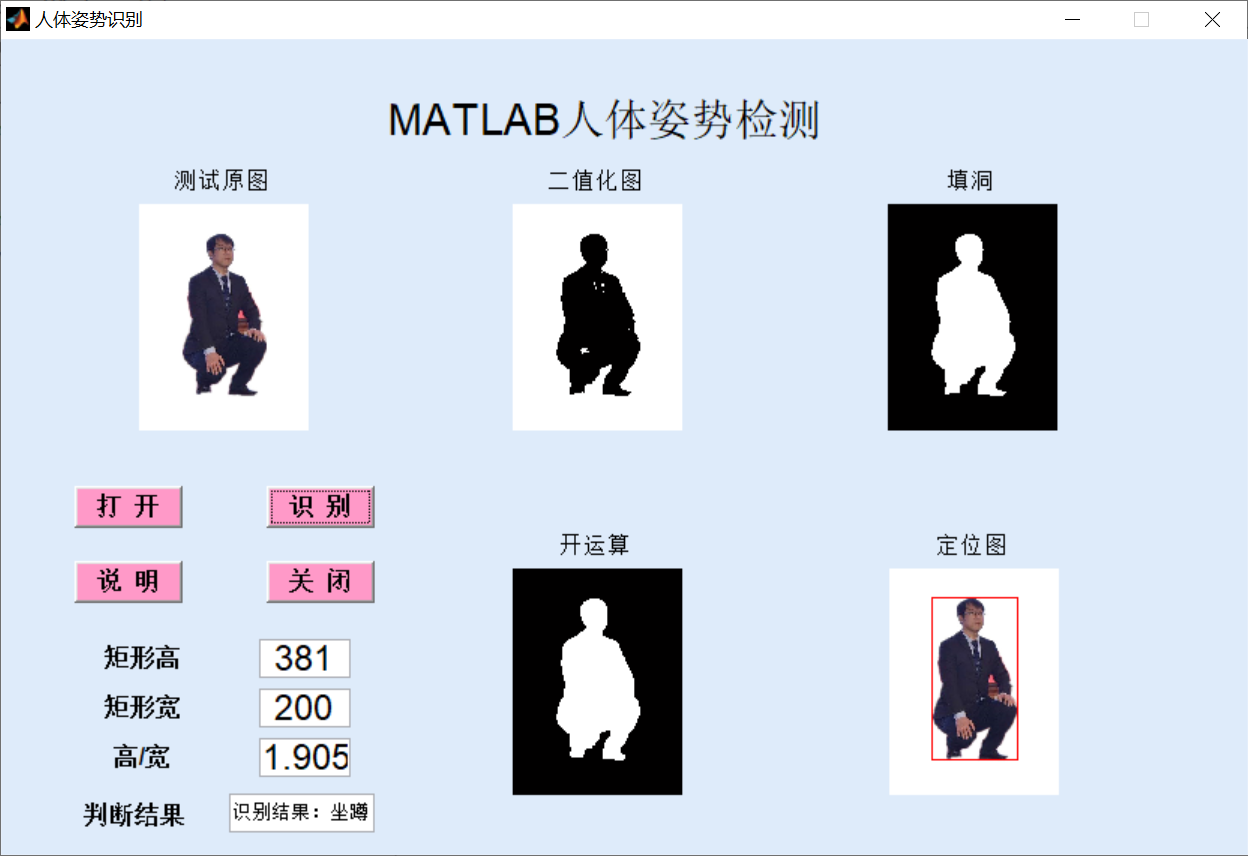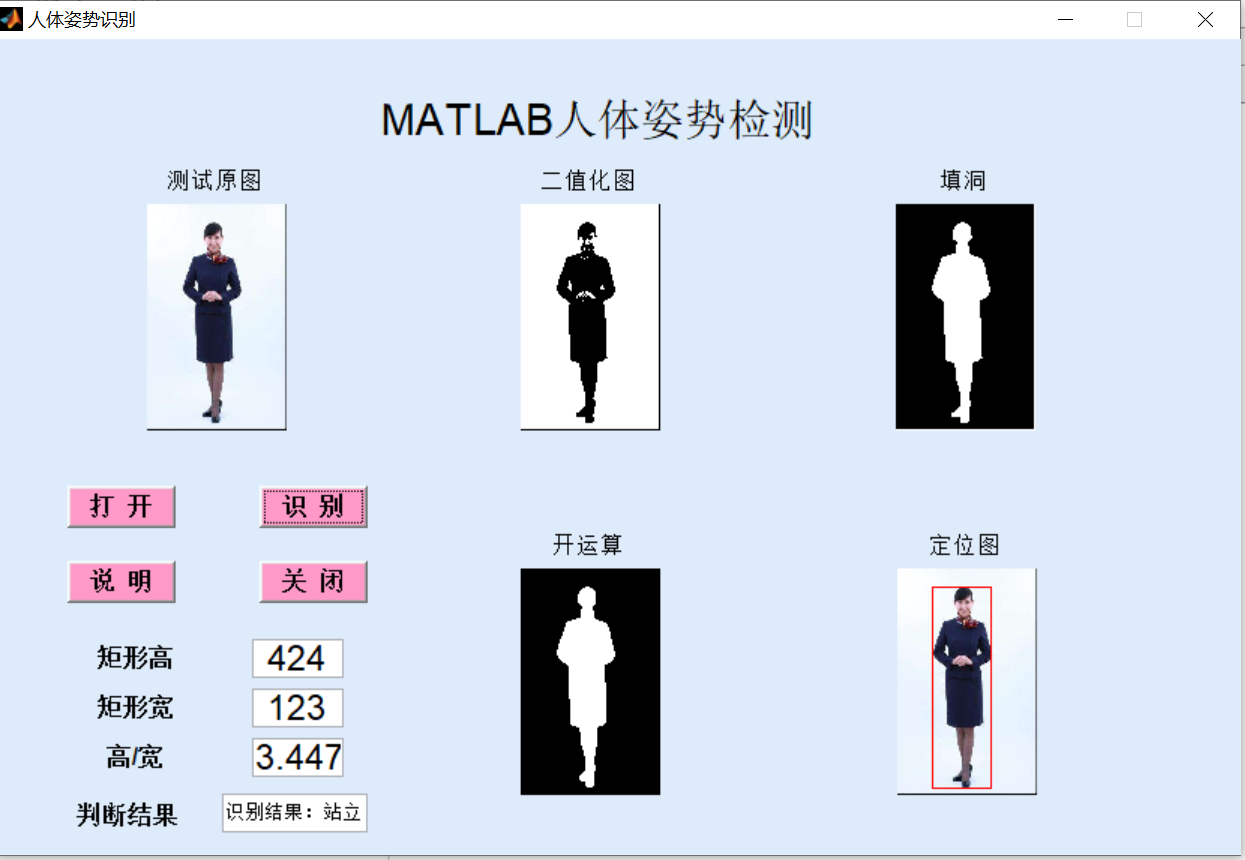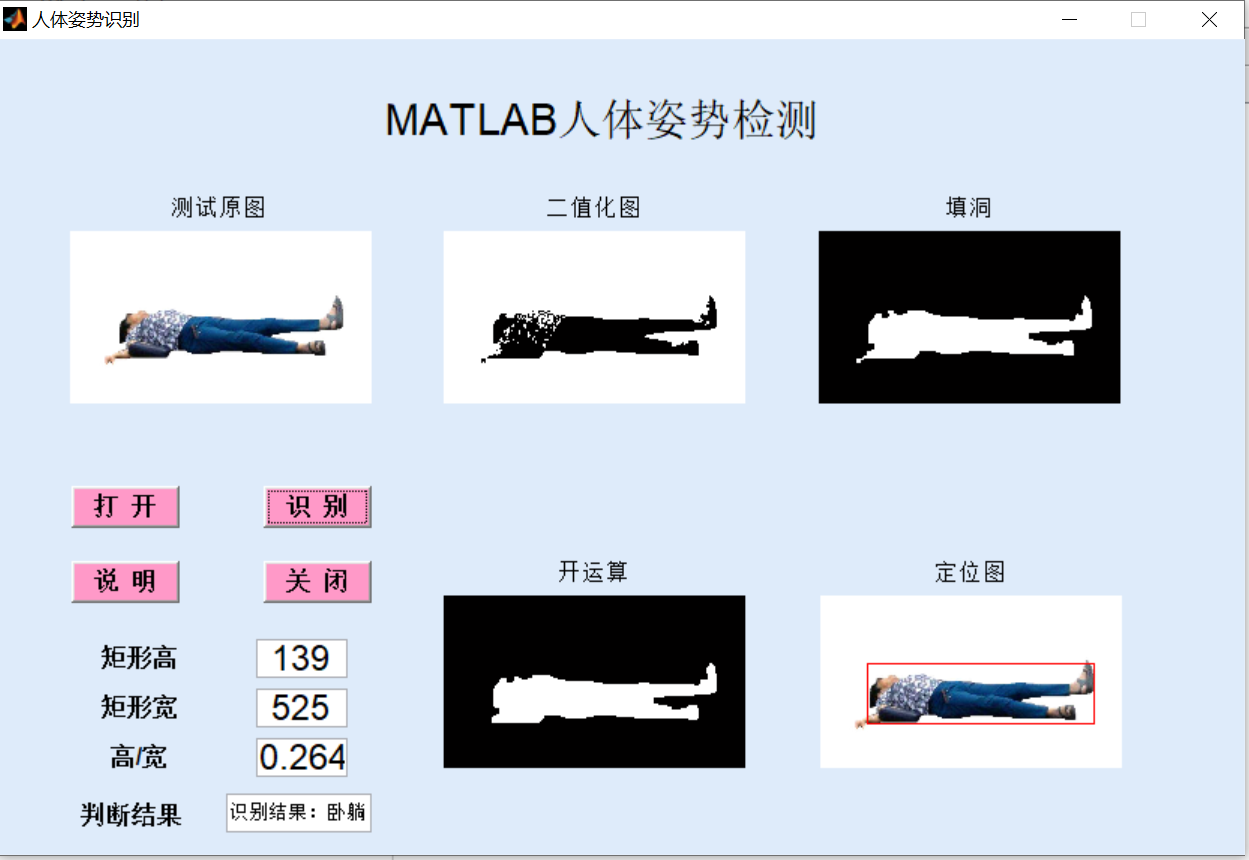题 目:基于视频的人体异常行为检测研究
专 业:安全防范工程
作 者:
指导教师:讲师
摘 要
公共场所中的群体安全问题也成为全球范围内关注并亟待解决的问题。传统的视频监控处理主要依赖于人力资源进行监控,耗费大量财力物力并且效率低下,已经不能满足目前智能视频处理的要求。人体异常行为检测作为视频监控领域中的关键技术,有着非常重要的研究价值。及时准确地发现人群中发生的异常行为,如人群异常聚集,打架斗殴等,并采取相对应的措施,对维护公共安全,保障人民群众的生命财产具有重要意义。
本文通过MATLAB软件编写GUI,对视频数据进行处理,对时间段内人体行为进行目标检测,行为识别,建立基于MATLAB图像(帧差法)算法模型,通过MATLAB软件编写GUI进行实现,对时间段内人体行为目标检测、行为识别,最后给出统计数据,并对准确性和速度进行论证分析。
关键词:视频监控;人体异常;行为异常;目标检测;MATLAB
Title:Digital watermarking algorithm based on discrete Fourier transform (DFT) is studied
Speciality:
Applicant:
Supervisor:
ABSTRACT
Group security in public places has also become a global concern and urgent problem. The traditional video surveillance processing mainly depends on human resources to monitor, which consumes a lot of financial and material resources and is inefficient, so it can not meet the requirements of intelligent video processing at present. As a key technology in the field of video surveillance, human abnormal behavior detection has very important research value. It is of great significance to find out the abnormal behavior in the crowd in time and accurately, such as the abnormal gathering of the crowd, fighting and fighting, and taking corresponding measures to maintain public safety and protect the people's life and property.
This paper deals with video data by MATLAB software writing GUI,, object detection and behavior recognition of human behavior in time period, and establishes an algorithm model based on MATLAB image (frame difference method), which is realized by writing software. Finally, the statistical data are given, and the accuracy and speed are demonstrated and analyzed.
Keywords: video surveillance; human abnormality; behavioral abnormality; target detection; MATLAB
目 录
1 绪论
1.1 背景及意义
1.1.1选题背景
1.1.2目的意义
1.2 研究现状
1.3 研究内容
2 算法介绍
2.1 基于视频的人体异常行为检测基础
2.2 视频图像预处理
2.3 运动目标检测
2.3.1 两帧差分法
2.3.2 光流法
2.3.3 帧差法
2.4 图像标识
2.5 图像分割
2.6 运动轨迹预测
2.7 目标跟踪
3 基于视频的人体异常行为检测实现
3.1 框架
3.2 目标跟踪实现流程
3.2.1目标跟踪流程
3.2.2 运动目标跟踪过程
3.2.3 运动目标跟踪过程分析
3.2.4基于最小外接矩形框跟踪原理
3.2.5特征提取
3.2.6 最小外接矩形提取
3.2.7最小矩形框跟踪实现
3.3 摔倒检测实现流程
3.3.1摔倒检测
3.3.2 跳,走,跑,坐,躺
3.3.3 灰度化
3.3.4 两帧差分法算法
3.3.5 三帧差分法
3.3.6 通过长宽判断人体行为
3.4实现效果展示
3.4.1异常状态是否全面
3.4.2 是否准确
3.4.3是否正确
3.5 分析
3.5.1 按行分析
3.5.2 按列分析
3.6结论
5 总结与展望
致 谢
参考文献
